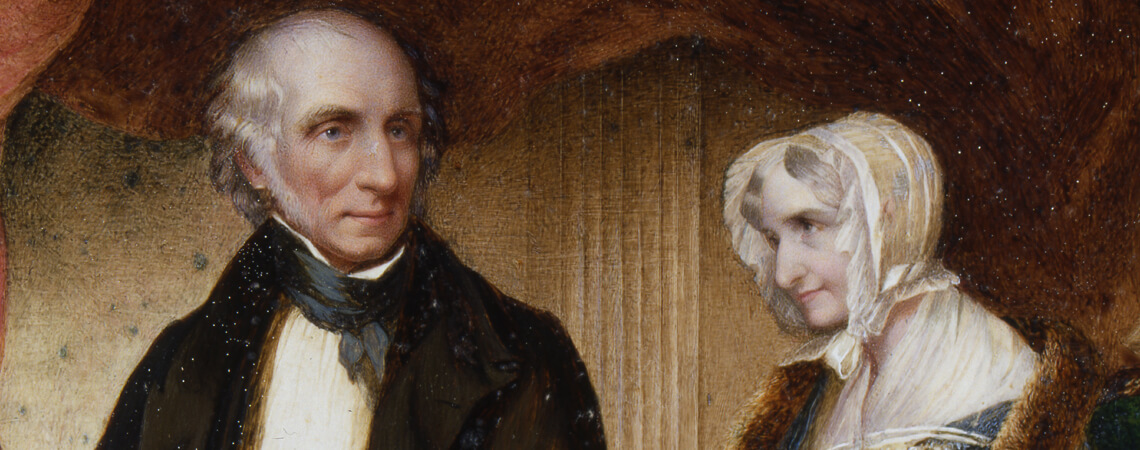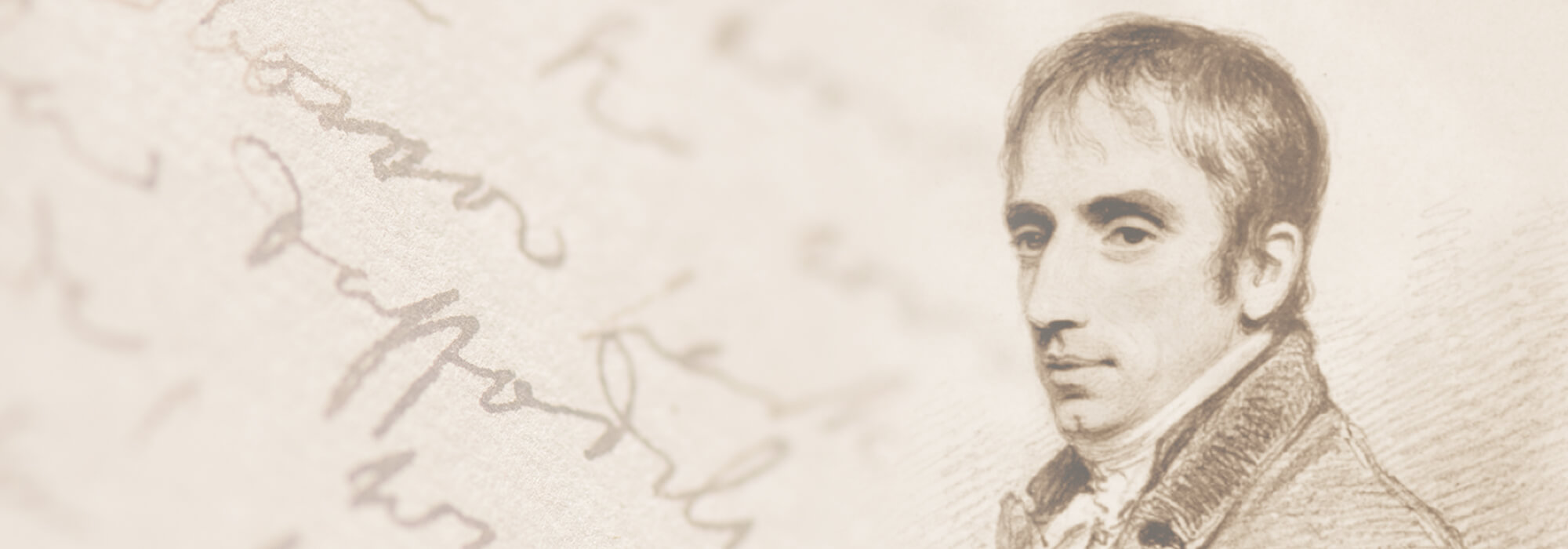The poetry of William Wordsworth remains popular and relevant 250 years after his birth because it explores nature and humanity’s relationship to it, a subject close to many people’s hearts. His most famous poem, commonly known as ‘Daffodils’, illustrates Wordsworth’s love of nature and his native Lake District and was inspired by his close relationship with his sister Dorothy.
I wandered lonely as a Cloud
That floats on high o’er Vales and Hills,
When all at once I saw a crowd,
A host, of golden Daffodils;
Beside the Lake, beneath the trees,
Fluttering and dancing in the breeze.
‘I Wandered Lonely as a Cloud’ (1815)
Radical Wordsworth
While ‘Daffodils’ is well known and often quoted it does not suggest an original and radical poet. William Wordsworth was both of these things and is credited with beginning a new movement in poetry – English Romanticism. The ideas and themes that underpin his work were formed during childhood freedom in the lakes and in the ferment of the French Revolution.
At the age of 20 Wordsworth travelled to France with his college friend Robert Jones with the intention of walking in the Alps. He was profoundly influenced by the natural beauty of the places he visited as well as the revolutionary fervor gripping France. This period awakened his democratic inclinations and stimulated ideas about the relationship between nature and humanity.

Wordsworth returned to England a changed man, driven to write and find a vocation. He also left behind his lover Annette Vallon and their child Caroline. His first poems were published in 1793 and he met Samuel Taylor Coleridge, a key figure in his development as a poet, a few years later.
William Wordsworth Poems
Lyrical Ballads, the collection of poems written by Wordsworth and Coleridge but published anonymously in 1798, is recognised as a significant and groundbreaking work in the history of English literature. The booklet contains the extraordinary ‘The Rime of the Ancient Mariner’ by Coleridge and also includes ‘Lines Written a few miles above Tintern Abbey’ amongst the poems by Wordsworth.
Oh! yet a little while
May I behold in thee what I was once,
My dear, dear Sister! And this prayer I make,
Knowing that Nature never did betray
The heart that loved her; tis her privilege,
Through all the years of this our life, to lead
From joy to joy:
‘Lines Written a few miles above Tintern Abbey’ (1798)
In the preface to later editions, Wordsworth describes the poems as ‘experiments’ and set out what he thought the role of a poet should be. Revolutionary for the time, the poems used simple language and featured common people to explore ideas and emotions. Wordsworth says in the preface that poetry is: ‘… the spontaneous overflow of powerful feelings: it takes its origin from emotion recollected in tranquillity’.

Both ‘Tintern Abbey’ and ‘Daffodils’ involved recollections of events shared with his sister Dorothy, a hugely important person in his life and influence on his work. Dorothy was a walking companion and trusted friend but also an observer and eloquent writer. Her Grasmere Journal gives a detailed insight into the life of the Wordsworth household and the beautiful landscape around them.
‘She gave me eyes, she gave me ears’.
William Wordsworth of his sister Dorothy
Centuries on we can only guess, from the sentiments expressed in Wordsworth’s poems, what he would have made of the world we live in now. His poem ‘The World is Too Much With Us’ gives us a sense of what he thought of human consumption and busyness in his lifetime and by extension what he might have thought of the way we act and behave today.
The world is too much with us; late and soon,
Getting and spending, we lay waste our powers;—
Little we see in Nature that is ours;
We have given our hearts away, a sordid boon!
This Sea that bares her bosom to the moon;
The winds that will be howling at all hours,
And are up-gathered now like sleeping flowers;
For this, for everything, we are out of tune;
It moves us not.
‘The World is Too Much With Us’ (1807)
William Wordsworth Coin
250 years since his birth, William Wordsworth’s poetry and life are being revisited and evaluated anew. The Wordsworth Trust (who supported The Royal Mint in the creation of the coin packaging) is creating new ways of telling the story of Wordsworth’s life and poetry through their project Reimagining Wordsworth. Over the course of 2020 this will involve events and workshops in a new learning centre as well as the redevelopment of Dove Cottage and the Wordsworth Museum near Grasmere. At the the heart of all the celebrations in the Lake District and across the UK are Wordsworth’s poems, which retain their emotional power and relevance.
Discover great stories from history and how we're celebrating these moments within The Royal Mint
Read more

